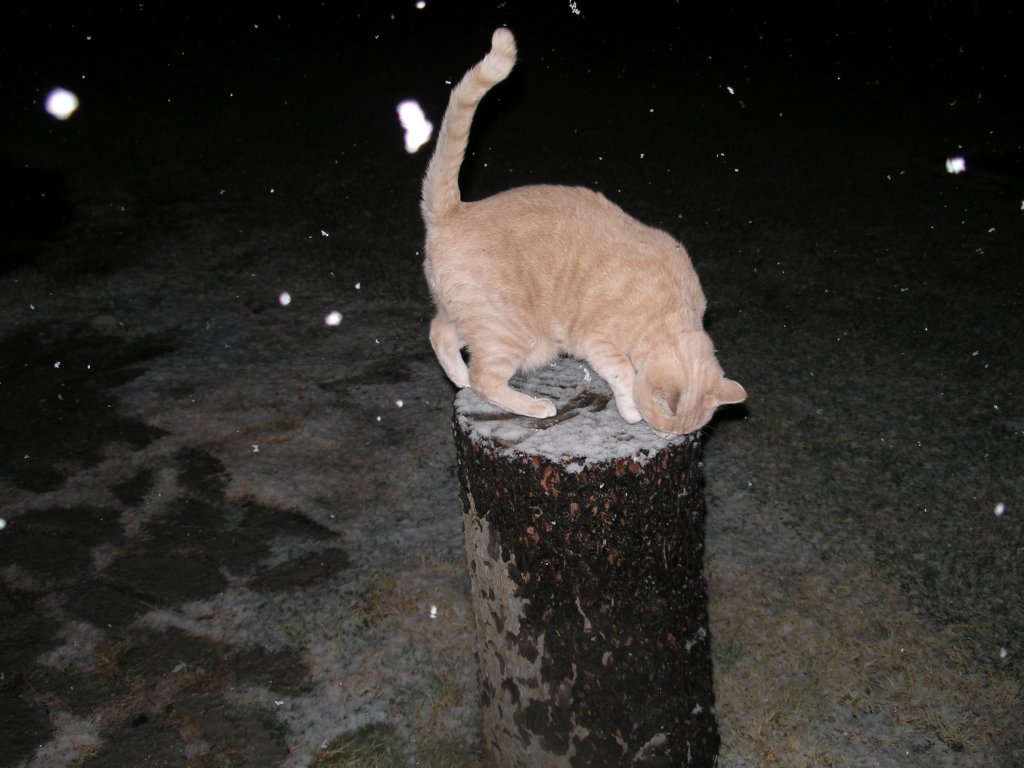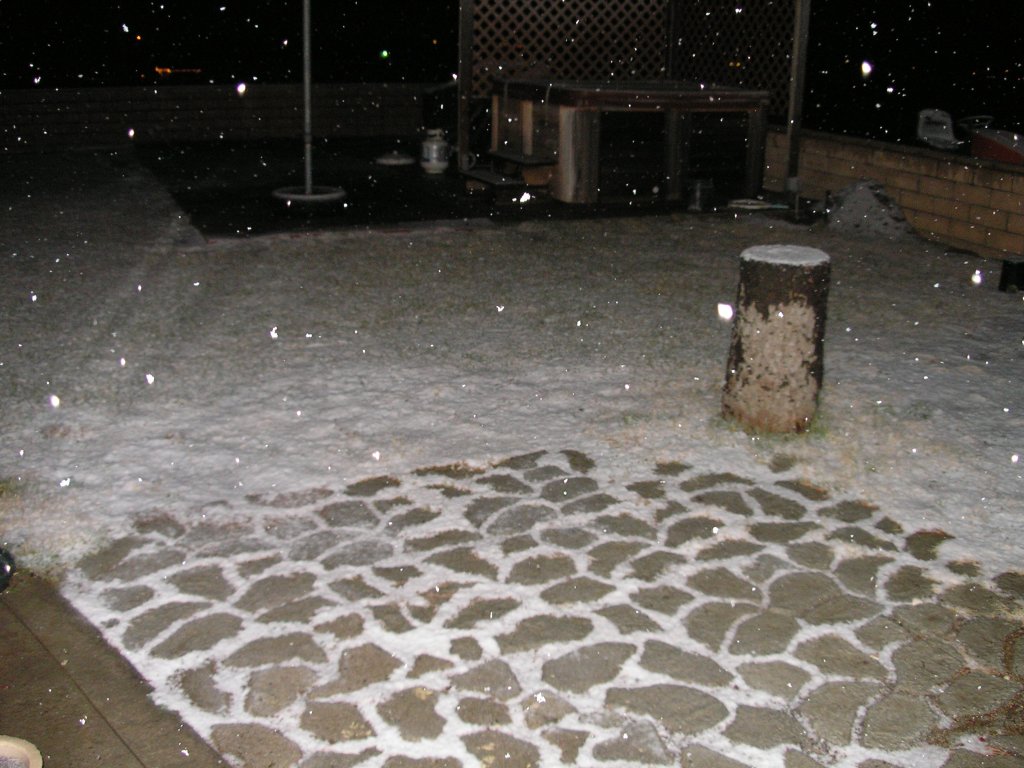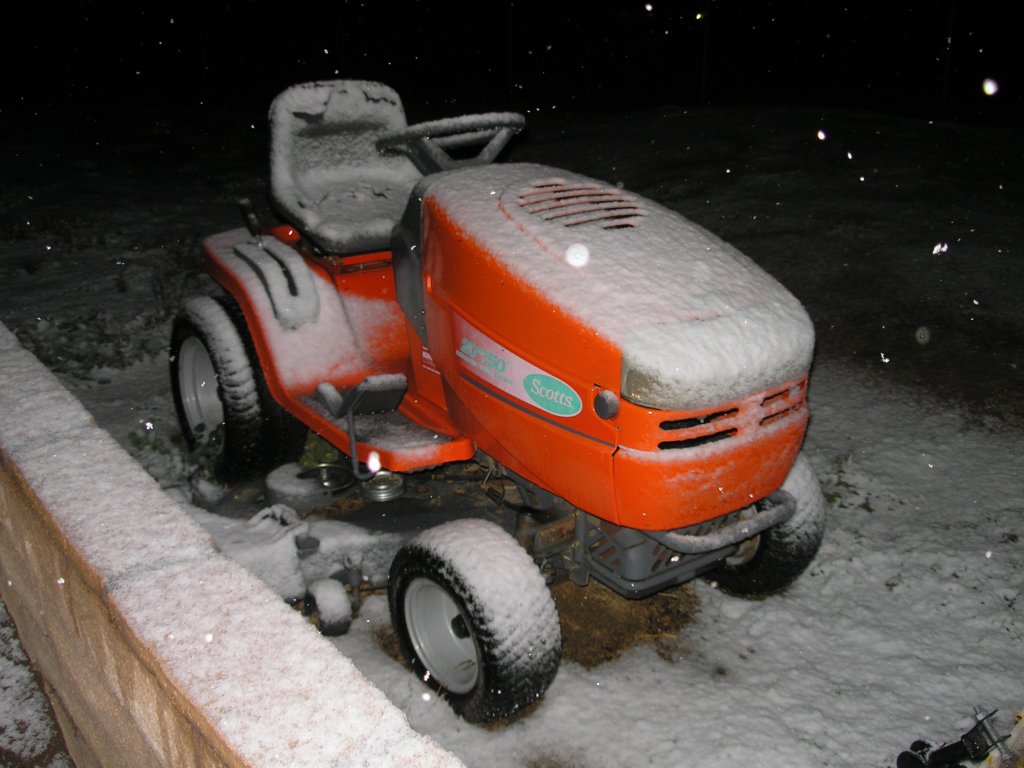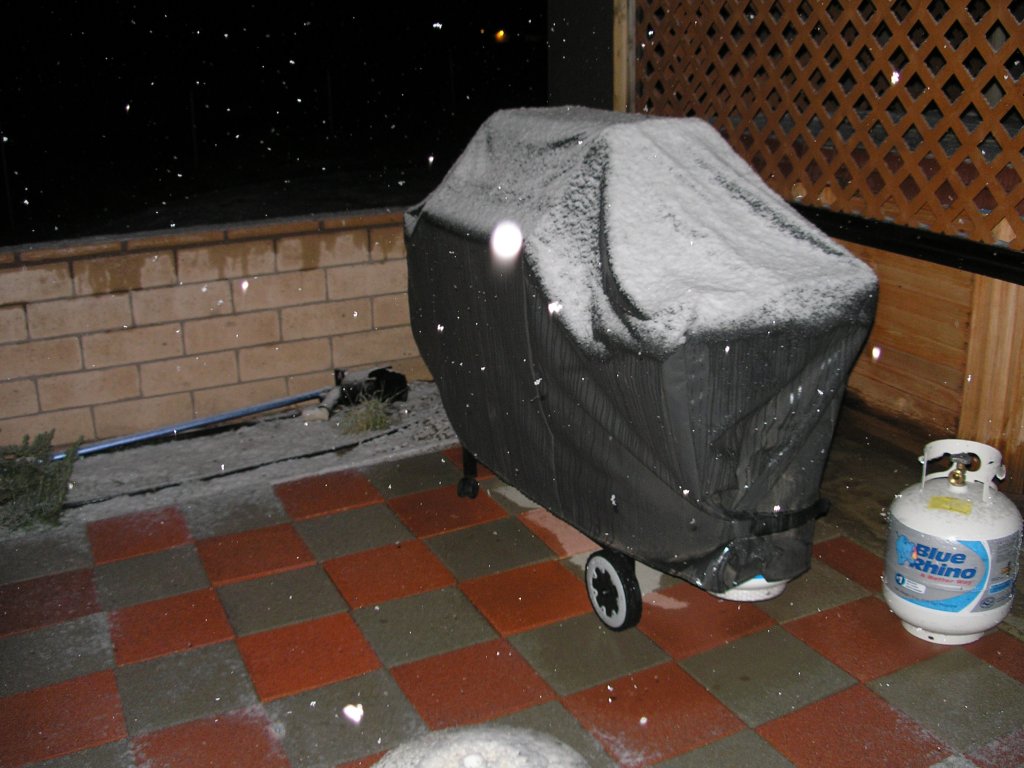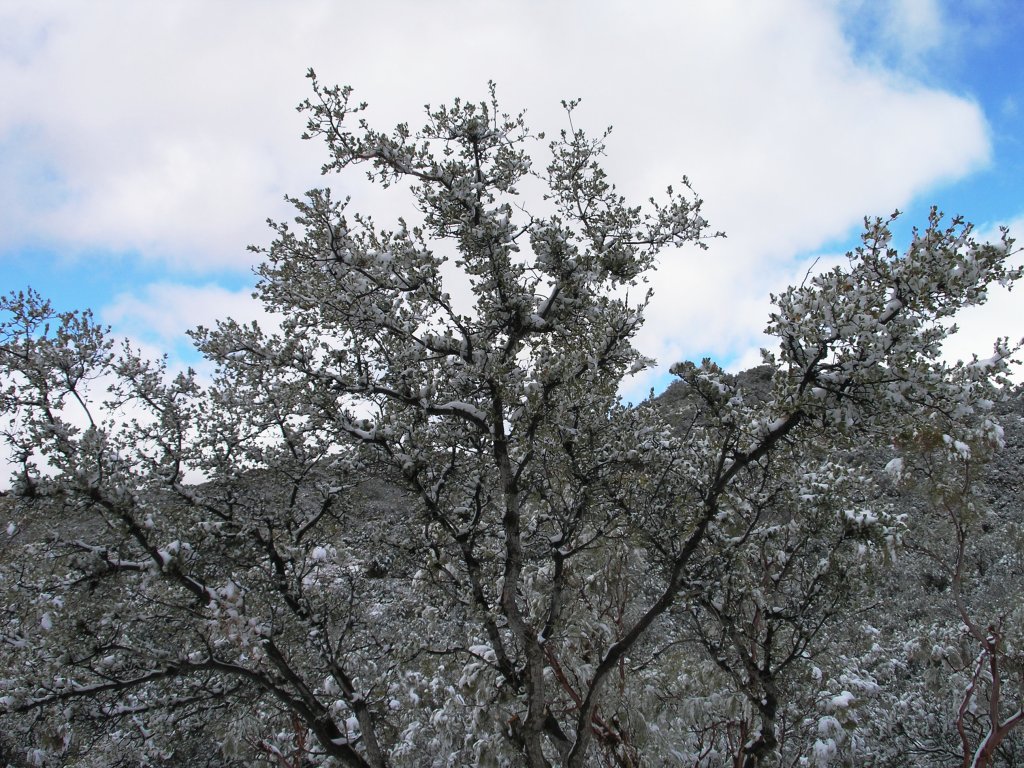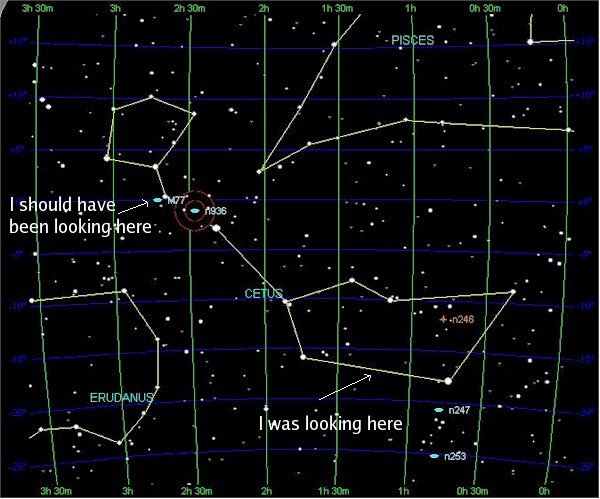We had some very interesting weather over the Labor Day weekend. I’d have blogged this sooner, but I was out of the country for a business trip.
We were out in Aguanga for the holiday weekend. The excitment started on Saturday. Quite a bit of moisture had been flowing into the area, and was being backed up by an additional flow from hurricane John. The cumulus clouds started forming by mid-day, and by mid-afternoon, you could see several large thunderstorms in the distance. There was a particularly large storm over the Palm Desert to Pinyon Pines area. The National Weather Service had severe storm and flash flood warnings up. We went into Anza for Mass at 5pm. It was very hot and humid, and it was fairly windy. When we came out of Mass at 5:45, the wind had changed direction and the temperature had fallen by 10-15 degrees.
The real excitment started when we were driving back. As we were driving southwest out of Anza on California Route 79, I looked out the window to the southeast. There was a huge cloud of dust. It looked like the pictures I’ve seen of big dust storms in China and Australia. This one was about 1,500 feet high and extended from Anza off into the distance. I lost no time driving back to the house in Lake Riverside Estates, about 10 miles from Anza. As we were driving, the cloud kept getting closer to us. It must have been moving 30-40 miles per hour, and since we were driving obliquely to its direction, it was catching up to us.
It finally swirled around us when we got back to the house. It was a mass of gritty air and high wind. No damage, but a bit of excitement for sure. But very little excitment compared to what came on Sunday.
We left early Sunday for Julian. Just a quick siteseeing trip to the old mining town in northern San Diego County. A pretty drive down highway 79, through Warner Springs, past Lake Henshaw. My daughter pointed out the many domes on top of Mount Palomar. Julian was fine. A tourist town. We had a nice lunch and bought our apple pie (apple pie is a local specialty). As they had the day before, the cumulus were forming by mid-day. We started back to Aguanga at about 1 pm. We had a little rain on the way back, particularly just after passing Sunshine Summit and Oak Grove. My daughter was quite excited about the rain (I was too). She said she wanted to be right in the middle of a big thunderstorm. Her mother told her to be careful what she asked for. Prophetic words indeed.
We ran into solid rain, desert thunderstorm style as we drove up California Highway 371 to Lake Riverside Estates (LRE). The truck (Did I mention the truck? Probably need to put the truck story in another post.) was bufetted by the wind and large drops hit us with loud smacks. We slowed way down. The rain started about 2 miles from the south gate to LRE. When we got to the gate, someone ahead of us had just swiped the card key but the gate was only partially opened and not moving. We got past. It was a bit tense at this point as the rain was coming down very hard and we still had two miles to go before we got to the house.
Some background information is important here. When we purchased the house, one item revealed in the disclosures was that several years ago a big storm had sent a stream of mud down the hill and into the house. The previous owners had done some extensive grading to prevent a recurrence. But we were worried.
We got back to the house. The major flow of water on the street was going away from the property, exactly as desired. There was a good flow down the hill, but at first glance it looked OK. We parked the truck and went in the house. Flash, bang, crash. Lightning closer than half a mile away. That cool ripping sound that comes when the flash is really close. Rain pounding down on the Sun porch and car port roofs. Water streaming out of the waterspouts. And a steady flow of water down the driveway, creating a growing mud-filled puddle in the car port.
I stomped around, trying to get it to drain until one too many flashes of lightning came close and I decided it wasn’t a good idea to get fried. My wife noticed that the water was not draining away from the Sun porch very well. The major drainage was working fine. The only problem was the drive, which was now filled with muddy water 6 inches deep.
The rain continued for at least 45 minutes. After one too many crashes of thunder, my daughter hid in the closet with her rats. Yes, I think she changed her mind about wanting to be in the middle of a storm!
After the rain stopped, I was able to find the drain and clear the pine needles away from it so it would drain. We were soon left with a lot of Anza mud, the wet version of the ever-present Anza dust. We got out the wheelbarrow and started shovelling. Progress was slow, but we were able to use the sand and mud to block the place where the water was sluicing down the drive. We cut a couple of channels that we hoped would divert much of the mud the next time. Several hours later, we (well my wife primarly as I went into Anza with a load of green stuff for the dump) finished the clean up. The drains had all worked. We now know what needs to be done to the driveway to permanently fix the problem.
And I hope we have seen the worst of the storms for a while.
Like this:
Like Loading...


